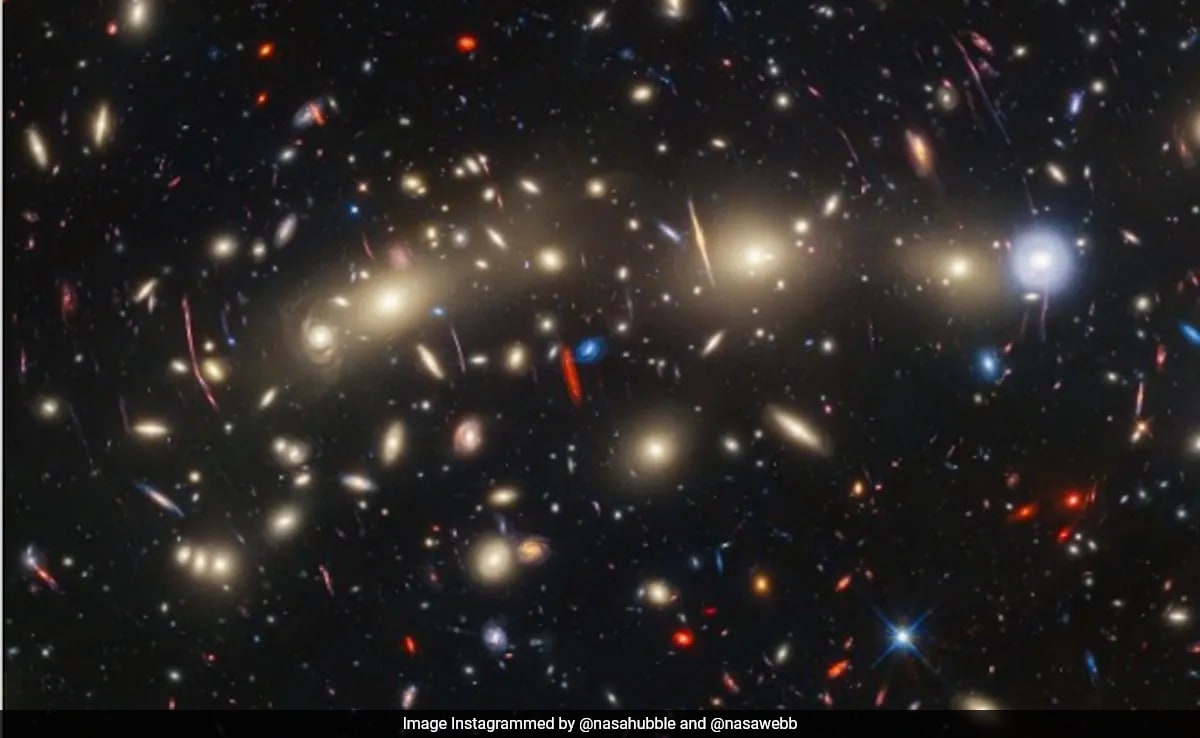
This galaxy cluster is located 4.3 billion light-years away.
NASA’s James Webb Space Telescope and Hubble Space Telescope have united to produce a stunning image of two massive clusters of remote galaxies colliding in space and time. Taking to Instagram, NASA Hubble and NASA Webb shared the mesmerising picture of the galaxy cluster, located 4.3 billion light-years away. Notably, according to the US Space Agency, a galaxy cluster is any number of galaxies that are gravitationally bound to each other. They are the largest objects in the known Universe.
The image shows a wealth of details that are only possible by combining the power of both space telescopes, NASA said. “@NASAHubble and @NASAWebb joined forces for one of the most colorful views of our universe – ever. This is a galaxy cluster called MACS0416, located a whopping 4.3 billion light-years away,” the agency wrote in the caption of their post.
Take a look below:
NASA wrote that while the Hubble Space Telescope sees largely in visible light, the James Webb Space Telescope sees in infrared. The agency explained that more can be learned about galaxy distances through the images’ colours. “Bluer colored galaxies are relatively nearby and often show intense star formation, which is best observed by Hubble, while the redder galaxies tend to be more distant, or else contain a lot of dust, as detected by Webb,” the caption read.
Also Read | Scientists Find Lost Continent That Had Been Missing For 155 Million Years
The merged image is one of the most comprehensive views of the universe ever taken, according to NASA. As well as imaging MACS0416 the image shows hundreds of completely unrelated galaxies in the background.
“We’re calling MACS0416 the Christmas Tree Galaxy Cluster, both because it’s so colorful and because of these flickering lights we find within it. We can see transients everywhere,” said Haojing Yan of the University of Missouri in Columbia in a NASA blog.
Now, the observations are being used by astronomers to discover more about stars that would otherwise be invisible, and supernovae magnified by the gravity of larger celestial objects.
Meanwhile, since being shared on Instagram, NASA’s post has accumulated more than 82,000 likes.




